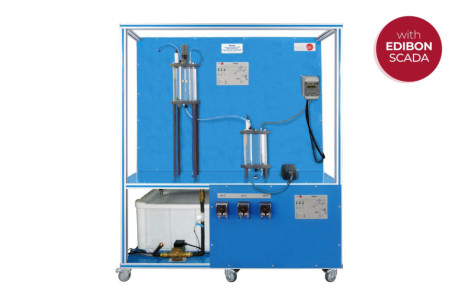Water is an essential resource for human life, economic development, and the planet’s ecological balance. However, as we move deeper into the 21st century, its availability and quality are increasingly at risk. Population growth, industrial and agricultural pollution, water scarcity in vulnerable...
In a world where climate change represents one of the greatest threats to our future, carbon dioxide (CO2) adsorption has become an urgent priority. The increasing concentration of CO2 in the atmosphere, primarily driven by human activities such as fossil fuel combustion and deforestation, has...
At EDIBON, we are committed to strengthening skills as a strategic pillar for the competitiveness and social well-being of the European Union. Proper training not only boosts the economy but also enables individuals to fully participate in society and democracy.
Direct Air Capture (DAC) ist eine innovative Technologie, die CO₂ direkt aus der Luft entfernt, indem chemische Reaktionen mit flüssigen Lösungsmitteln oder festen Adsorbentien eingesetzt werden. Trotz Herausforderungen wie hohen Kosten und Energieverbrauch bietet DAC eine potenzielle Lösung zur...
Abwasserbehandlungsanlagen
Während Trinkwasseraufbereitungsanlagen sich darauf konzentrieren, sicheres Trinkwasser bereitzustellen, behandeln Abwasserbehandlungsanlagen das gebrauchte Wasser, bevor es wieder in die Umwelt freigesetzt wird.
Diese Anlagen spielen eine entscheidende Rolle beim...
Food and water technology stands as a fundamental pillar in modern society, addressing crucial challenges and providing ingenious solutions. In this journey, we will unravel the mysteries of this multifaceted field, exploring its key areas of study, the significance of food and water engineering...
Food Technology is a branch of Food Science based on multidisciplinary knowledge of nutrition, chemical analysis, physics, biochemistry and engineering. Water treatment technologies obtain drinking water, so necessary for our life.
Both disciplines have become in recent years an indispensable...
 Cookie-Präferenzen
Cookie-Präferenzen





























